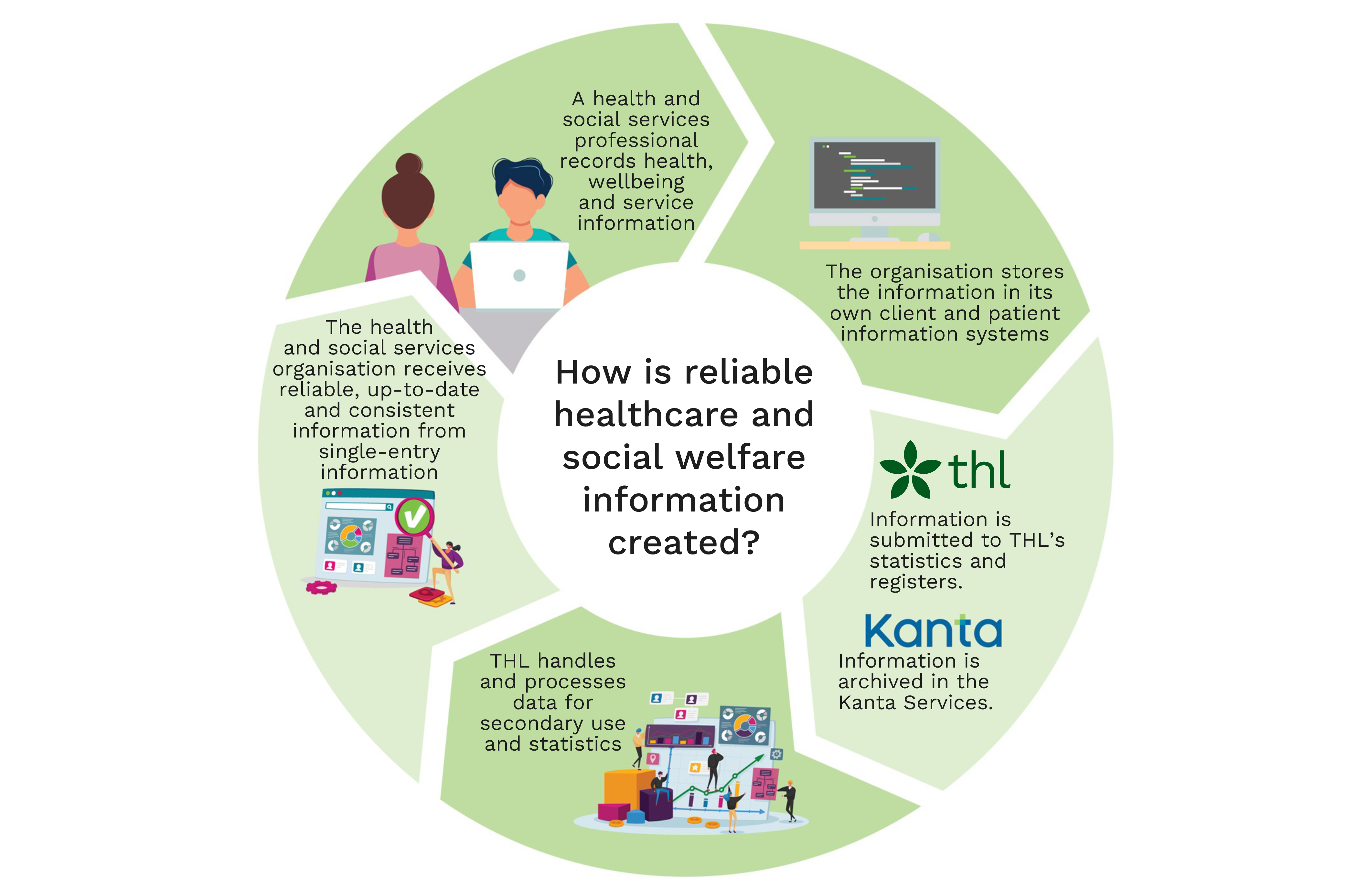Quality of information
A lot of information is produced in healthcare and social welfare. The quality of data plays an important role for those who record data and those who develop its recording, systems administrators, supervisors, persons responsible for statistical and register data and information systems, developers of the effectiveness of the service system and developers of data for secondary use.
Primarily, the data serves healthcare and social welfare professionals and service organisers in their everyday work. It is also used by the authorities in their evaluation, guidance and supervisory tasks and by the wellbeing services counties in knowledge-based management.
The conditions for quality
National specifications are the basis for a high quality of data. All healthcare and social welfare organisations must produce data with uniform data structures. Only then will it be possible to compare ,analyse and interpret it reliably. When national code sets, classifications and vocabulary are used, it is also possible to compare data internationally. THL's task is to coordinate national and international specifications.
The suppliers of information systems must use the data structures defined by THL in their client and patient information systems.
However, structures alone are not enough to guarantee quality. Uniform recording practices make recording easier and ensure the quality of the information. THL's task is to provide instructions for national recording practices.
When professionals use systems that support their work, they can record information in a way that produces high-quality client-specific data.
High-quality client-specific data also enables systems to support the work and decision-making of professionals at different stages of the client's service. The professional must have a care or client relationship with the person receiving the service and appropriate access rights to the information system. In addition, usability requirements must be taken into account in the development and procurement of information systems.
Client and patient information that has been compiled and anonymised for secondary use can be used, for example, to view information regionally, nationally or by client group.
Lifecycle of data utilisation
Data produced in healthcare and social welfare must be available to those who need it. It must be possible to process, compile and analyse it with different systems and in locations where it was not produced.
Well-managed information security and data protection ensure that the information is available only to those entitled to use it.
The starting point for reliable healthcare and social welfare information is high-quality recording and production of information. Practical tools such as information systems play a key role in the direct utilisation of data and the usability of the data generated. National data resources and data collections compile data to be used in both service activities and secondary use.
Information is handled and processed for decision-making and other secondary use at the population level. It is a precondition for being able to manage and develop health and social services both nationally and regionally. High-quality information is also the basis of research.

Knowledge-based decision-making
Knowledge-based management is discussed, for example, when the health and social services system is evaluated, supervised and directed on the basis of the compiled information. Only source data that is of a high quality can be used to create realistic and reliable summaries and overviews to support decision-making. Quality also means that information is available easily and sufficiently quickly.
High-quality information plays an important role when decisions are made on the organisation and funding of health and social services in the wellbeing services counties. A sufficiently clear and extensive situation picture is a precondition for improving services. This is important for society as a whole when the aim is effective services or equal access to them.




